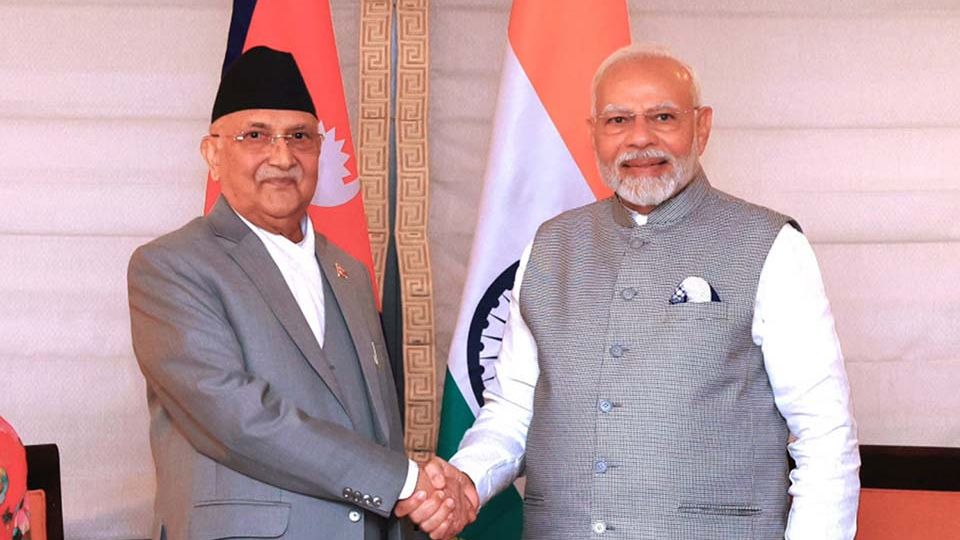April 22, 2025
KATHMANDU – Prime Minister KP Sharma Oli is in a fix. His dogged stand against the 2015-16 Indian blockade earned him considerable political capital which he spent to become prime minister three times. In the blockade’s aftermath, the brand of anti-Indian politics Oli championed was popular, and so he fulminated against the ‘big brother’ with abandon. He mocked the Indian national emblem, claimed Lord Ram was born in Nepal, and it was under his watch that the whole Kalapani region was included in the official map of Nepal, and then in the national charter. Again, Oli rode the nationalist fervour to extract political benefit from all these initiatives. Yet in time he has also come to a sobering conclusion: The anti-India sentiment has its limits, and can even be a liability if you want to lead Nepal’s federal government for any time. He now realises that India can make life difficult for him: By using its leverage over the Nepali Congress to sow division in the ruling coalition, or by fanning pro-monarchy protests, or by fueling suspicions that it won’t do any business with Oli, a doubt that makes him politically vulnerable.
Oli’s government leadership is unpopular—a fact that has little to do with India. Yet in order to find some wiggle room to govern, Oli has not been averse to again needling India, for instance by claiming that the current pro-monarchy protests have New Delhi’s backing. But his desperation to earn New Delhi’s trust has also been evident all along. When Oli did not get a desirable response from India, he tried to woo China. Late last year, he visited Beijing and oversaw the signing of the framework for BRI cooperation. After much effort, he was able to meet his Indian counterpart Narendra Modi one-on-one for nearly 40 minutes at the sidelines of the recent Bimstec summit in Thailand. But the meeting did not go well, with Modi reminding Oli that if he wanted better ties, he should first reign in his loose tongue and stop using China as a counterweight to India. New Delhi, meanwhile, is keeping its chief adversary at a safe distance and getting most day-to-day bilateral works done via Nepali Congress, the biggest party in Nepal’s ruling coalition. This is why, try as he might, Oli has failed to secure an invitation to visit New Delhi: India seems to be in no mood to give greater international legitimacy to the Oli government.
Both sides need to rethink their course. If Oli wants better ties with New Delhi, he must stop publicly making undiplomatic remarks about India. If something needs to be communicated, he can always use the diplomatic channels. He must also be ready to listen to and address India’s legitimate concerns. On the other hand, New Delhi would be advised to pursue a more hands-off approach. It only gains infamy by again being seen as trying to make and unmake governments in Kathmandu. Nepal-India ties are too strong and diverse for any one government in Kathmandu to destroy. For the same reason, New Delhi’s preoccupation with minimising ‘Chinese inroads’ into Nepal are overblown. India’s links with and leverage over Nepal are incomparable. And, ultimately, if Nepali people see that India is intent on singling out their prime minister, such a strategy could backfire by stoking the latent anti-India sentiment. We hope both Kathmandu and New Delhi abandon narrow-mindedness and pursue ties in the long-term interest of both countries.


